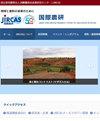Childhood Health and Mother Empowerment in Rural Myanmar
IF 0.5
4区 农林科学
Q4 AGRICULTURE, MULTIDISCIPLINARY
引用次数: 0
Abstract
Child health is often a weak link in developing countries, and Myanmar is a case in point. Broadly speaking, a mother’s education has been shown in the literature to be an important factor in the determination of child health. But the empowerment of women over the allocation of intrahousehold resources has also been shown to be an important child health factor, and thus an accumulation of human capital. In the present study, we use survey data on an important anthropometric indicator of child health and its associated household characteristics to specify and estimate a child-health production function in rural Myanmar. We then use this production function to draw implications for the height-for-age growth curves. Importantly, our questionnaire-based indicator of empowerment shows the mother’s inf luence over household decisions regarding income, expenditures, and education to be an important factor in the Z-score of the height-for-age indicative of a child’s longterm nutritional status. Nearly 30% of girls and 48% of boys are found in a condition of being stunted nutritionally, and the growth curves come closer to the WHO standard as the empowerment of women improves. Although a number of women rights were achieved early in Myanmar, greater empowerment in the home remains a key to improve child welfare. Discipline: Social Science Additional key words: bargaining power, child nutrition, health production function, height-for-age, human capital缅甸农村的儿童健康和增强母亲权能
儿童保健往往是发展中国家的薄弱环节,缅甸就是一个很好的例子。从广义上讲,文献表明母亲的教育是决定儿童健康的一个重要因素。但是,在分配家庭内部资源方面赋予妇女权力也已被证明是儿童健康的一个重要因素,因此也是人力资本的积累。在本研究中,我们使用儿童健康的重要人体测量指标及其相关家庭特征的调查数据来指定和估计缅甸农村的儿童健康生产函数。然后,我们使用这个生产函数来绘制身高随年龄增长曲线的含义。重要的是,我们基于问卷的赋权指标显示,母亲对家庭收入、支出和教育决策的影响,是反映儿童长期营养状况的年龄比身高z分数的重要因素。近30%的女孩和48%的男孩处于营养不良状态,随着妇女赋权的提高,生长曲线更接近世卫组织的标准。虽然缅甸在早期就实现了一些妇女权利,但在家庭中获得更大的权力仍然是改善儿童福利的关键。附加关键词:议价能力,儿童营养,健康生产函数,年龄身高比,人力资本
本文章由计算机程序翻译,如有差异,请以英文原文为准。
求助全文
约1分钟内获得全文
求助全文
来源期刊
CiteScore
1.00
自引率
25.00%
发文量
42
审稿时长
>36 weeks
期刊介绍:
The Japan Agricultural Research Quarterly (JARQ) is a publication of the Japan International Research Center for Agricultural Sciences (JIRCAS), which provides readers overseas with the latest information on key achievements and developments in agricultural research in Japan, with the expectation that this information would contribute to the agricultural development of countries in tropical and subtropical regions.

 求助内容:
求助内容: 应助结果提醒方式:
应助结果提醒方式:


